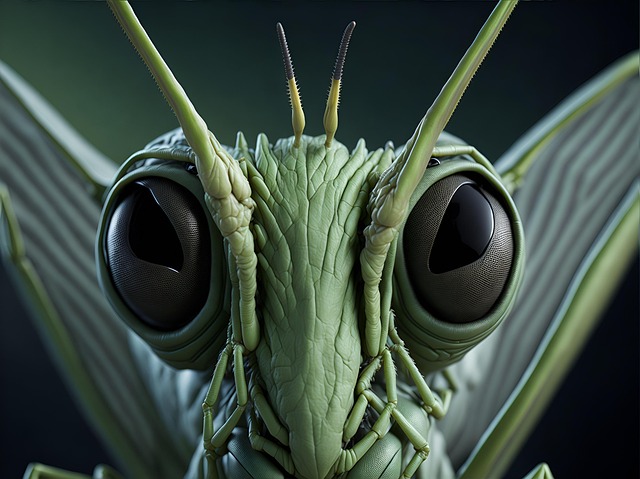Professional pest control emphasizes post-treatment care for sustained protection against reinfestation. This involves tailored strategies like regular inspections and eco-conscious methods (natural repellents, habitat modification) to manage diverse pests (rodents, bed bugs, ants, cockroaches). By combining traditional and eco-friendly treatments, experts offer pest treatment solutions that safeguard homes and businesses while preserving the environment, ensuring long-term success in pest management.
In the realm of professional pest control, post-treatment care and prevention are paramount to ensuring longevity and maintaining a pest-free environment. This comprehensive guide delves into essential practices and innovative solutions that cater to diverse pest concerns. From eco-friendly methods balancing effectiveness and sustainability to specialized treatments for termites and rodents, we explore effective strategies. Discover expert advice on bed bug, ant, and cockroach infestations, highlighting the latest in pest treatment solutions for a healthier, safer home.
Post-Treatment Care: Ensuring Longevity of Professional Pest Control Solutions
Post-treatment care is an essential aspect of ensuring the longevity and effectiveness of professional pest control solutions. After initial treatment, regular monitoring and follow-up services are crucial to maintaining a pest-free environment. This includes scheduled inspections to identify any recurring issues or new infestations early on. For instance, termite treatment services often require ongoing maintenance to prevent future damage. Similarly, effective pest treatments for rodents, bed bugs, ants, and cockroaches should be part of an ongoing strategy to keep these pests at bay.
Eco-friendly pest solutions are gaining popularity as businesses and consumers become more conscious of environmental impacts. These methods focus on natural repellents, habitat modification, and non-toxic chemicals to manage infestations. Regular post-treatment care can help reinforce these eco-conscious approaches, ensuring that pest problems are addressed without causing harm to people or the environment.
– The importance of post-treatment follow-up
Post-treatment care and follow-up are essential components of any professional pest control service. Effective pest treatments don’t simply end once the initial problem is resolved; rather, they require ongoing monitoring and maintenance to prevent reinfestation. Professional pest controllers play a vital role in providing this critical post-treatment support.
By offering comprehensive termite treatment services, rodent treatment solutions, bed bug treatment options, and cockroach treatment services, these experts ensure that any existing issues are fully eradicated and do not recur. Additionally, they can recommend eco-friendly pest solutions or green pest control methods to customers seeking more sustainable alternatives. Regular follow-ups allow professionals to assess the effectiveness of treatments, identify any new infestations early on, and adjust strategies as needed, ensuring long-term protection for homes and businesses alike.
– Monitoring and maintenance strategies for different pest treatments
Post-treatment care is a crucial aspect of ensuring long-term success in pest management. Different pests require tailored monitoring and maintenance strategies to prevent reinfestation. For instance, termite treatment services often involve regular inspections and applications of eco-friendly pest solutions to protect structures from these wood-eating insects. Professional pest control experts can advise on the best methods for monitoring and maintaining treated areas, focusing on high-risk zones.
When it comes to various pest treatments, effective strategies differ widely. Rodent treatment solutions may include trapping and baiting programs that need ongoing adjustments based on population dynamics. Bed bug treatment options necessitate a meticulous approach, treating every crevice to prevent the rapid spread of these resilient pests. Similarly, cockroach treatment services often involve multiple applications of targeted chemicals combined with non-chemical interventions like sanitation and sealants. Proper post-treatment care ensures not only the elimination of existing infestations but also acts as a preventive measure against future pest intrusions.
Eco-Friendly Pest Solutions: Balancing Effectiveness and Sustainability
In today’s world, professional pest control is a crucial aspect of maintaining healthy and sustainable environments, especially after treatment for various infestations like termites, rodents, bed bugs, and cockroaches. The challenge lies in finding effective pest treatment solutions that not only eliminate unwanted guests but also uphold eco-friendly practices. Many traditional methods rely on harsh chemicals with potential environmental and health impacts, a concern for both professionals and consumers alike. Therefore, many companies are now adopting eco-conscious approaches to offer professional pest control services.
Eco-friendly pest solutions focus on using natural or minimally toxic products that target specific pests while preserving non-target organisms and the overall ecosystem. For instance, instead of chemical pesticides, some companies employ beneficial insects like ladybugs or spiders to control infestations. Termite treatment services can utilize baiting systems that attract and eliminate termites without harming nearby plants or other beneficial insects. Similarly, for ant infestation treatments, natural repellents and essential oils can be used alongside traditional methods, reducing the overall chemical footprint.
Professional guidance on post-treatment care and prevention is essential for maintaining the effectiveness of pest control solutions. By implementing proper monitoring and maintenance strategies, such as regular follow-ups and tailored treatments for various pests (including termites, rodents, bed bugs, ants, and cockroaches), eco-friendly practices can ensure long-term protection without compromising sustainability. Embracing these strategies not only safeguards homes and businesses but also contributes to a greener environment, highlighting the balance between effective pest treatments and ecological responsibility.
